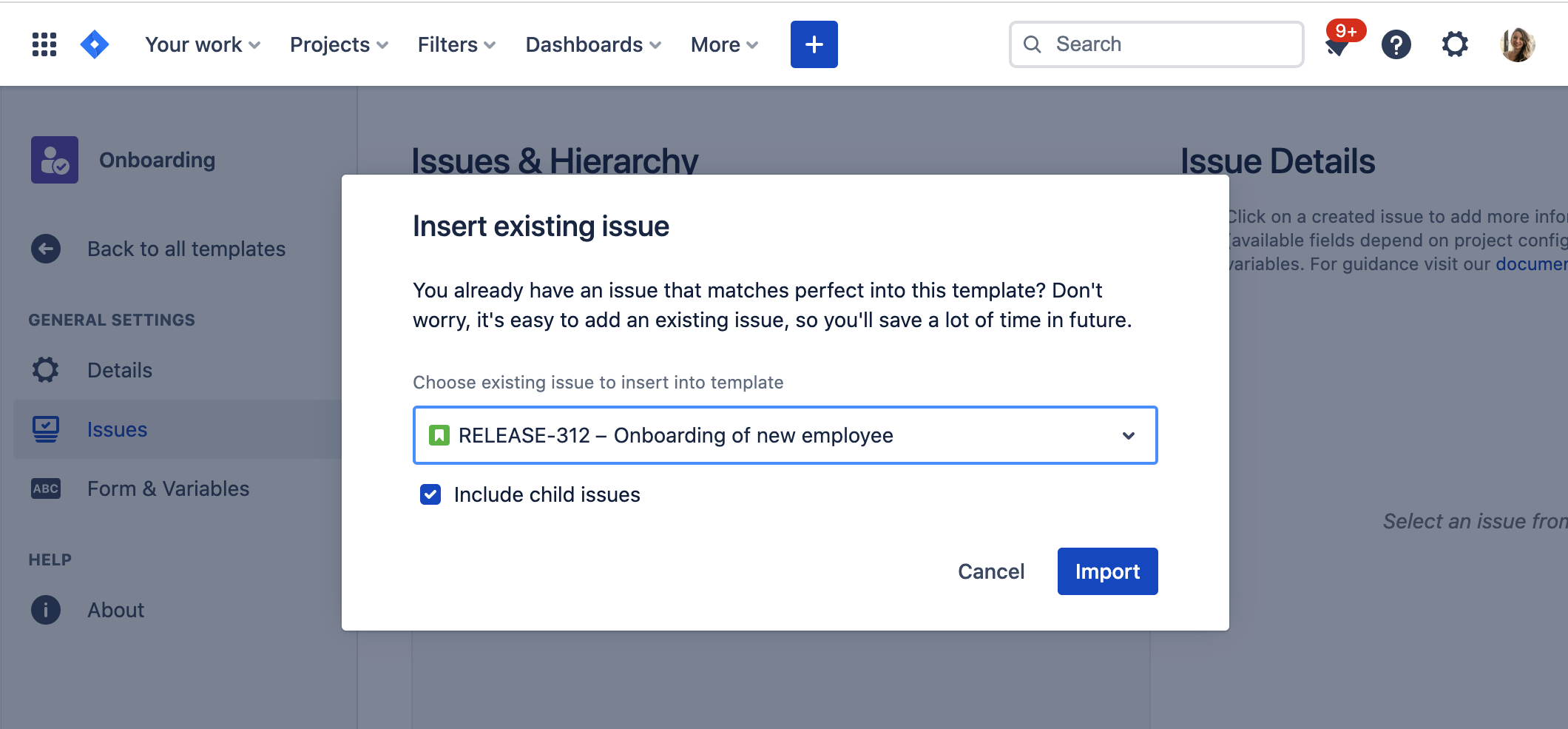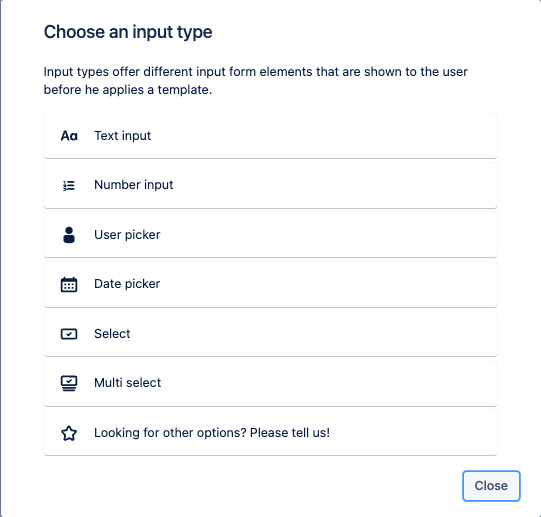
Source: Cameron Crowe (Director). (1996). Jerry Maguire [Film]. TriStar Pictures | Gracie Films | Vinyl Films
GIF Source: https://tenor.com/view/tom-cruise-help-me-you-jerry-gif-12671404
Oftentimes, making small improvements to your existing workflow may be all that’s needed. For instance, if you and your team have some good foundational practices in place, but the time and effort to implement them could be reduced, why not pursue that route rather than coming up with a new solution altogether? This could very well be the case with how Jira is being used within your organization; you know it’s working, you have some great processes in place, but you just know it could be improved, tweaked, and refined.
Well, we’ve got good news for you. With Templating.app – Easy Issues & Subtasks (Templates for Jira), you can now turn any of your existing Jira issues, or set of issues, into a template that can then be reused moving forward. This makes the process of migrating one of your existing Jira structures from On-prem or Data Center Jira instances to Jira Cloud.
Help Us Help You
Any time we can make a reference to the movie classic Jerry Maguire, count us in.
As mentioned above, you may already have some solid practices in place for your Jira instance including issues you reuse as they’re configured just the way you like them. Templating.app has included the functionality to create issue templates from scratch with a full hierarchy of epics, issues, as well as subtasks. Additionally, users can create templates with subtasks for single issues as well.
Sounds great if you’re starting from scratch, but what if you’re like thousands of others migrating your processes from Jira On-prem/Server or Data Center to Jira Cloud? Well luckily for you, our developers had already anticipated your predicament. Our Templating.app includes a functionality enabling Jira templates to be migrated from On-prem systems to Jira Cloud.
This new feature makes it easy to migrate a Jira issue structure (to be used for templates) from any template app for Server or Data Center to the cloud, and then simply convert it into a Jira cloud template at the push of a button.
Intrigued? We thought you might be.
First Things First - the Inherent Value of Templates
We can find templates in many aspects of our lives, not just those related specifically to product or software development.
An obvious example in a related context would be templates for writing a cover letter, resumes, form letters, addressing envelopes, etc. Rather than starting with a blank page and blinking cursor staring back at you as you undertake any one of those examples, the vast majority of times you can begin your work using templates.
Moving out from there, consider for a moment trails, roads, and railways. “A template?” you ask. Essentially yes. What if on every trip from your home or apartment to the grocery store or your friend's house, you had to make your own route through fields and forests each time, and each and everyone else had to do the same to reach their respective destinations? Chaos, pure chaos, let alone being entirely inefficient. So as an extension, our existing transportation infrastructure is a type of template we use each and every day.
Returning now from the realm of protracted definitions back to the context of our article - the value of templates in our lives as developers and project managers. In essence, templates allow us to focus less on the processes you are using and shifting it towards the actual work itself. If you and your team have taken the time upfront to properly design templates for your Jira issues and sub-tasks, moving forward you simply call upon that template you only had to develop just once, and then apply it over and over again to the work at hand.
Next - Using What You’ve Got

Source: https://dictionary.cambridge.org/us/dictionary/english/workaround
We could not have asked for a better definition or example of a “workaround” for this article than what the good folks at the Cambridge Dictionary came up with in the image above. Well done!
Maybe you, or let’s just say someone you know, has used a workaround for having a template within Jira for your…I mean their, projects by now. Most times, people use the clone feature of Jira to do so. What if we were to tell you (to tell them) you can convert these manually created issue templates into real, true templates that can be easily organized and require substantially less time to implement? Surely they’d thank you.
This is now the case with Templating.app. If you don’t have it installed already, as with all new apps, you’ll need to find Templating.app – Easy Issues & Subtasks (Templates for Jira) in the Atlassian Marketplace. If you have Administrator rights to your Jira instance, simply;
- Log into your Jira instance and click the Apps dropdown
- Choose Find new apps
- Search for “Templating.app” and click on the app tile
- Click Try it free to start installing your app
Once installed, you’re ready to get started.
NOTE: If you do not have Administrator rights to your Jira instance, once you’ve found Templating.app in the Marketplace, you will see a “Request App” button, which after clicking it will send notification to your Administrator to request its installation.
Once installed, open a Jira Cloud project where you want to work with issue templates.
Under the Issues & Hierarchy area, click on the Insert existing issue button. From the dropdown, select the matching issue (highest level) which you want to insert. Click Import (Summary, Description any many other field inputs will be imported as well) and select the appropriate response for the Include child issues option checkbox.
Back at the template screen on the left hand side under General Settings, if you click the Form & Variables option (if needed), you can add any variables needed. When complete, click Save.
Pretty simple right? And that’s not all, you can import issues into Subtask Templates as well. To do so, just follow these simple steps;
- Navigate to a project where you want to create the subtask template
- Create a new template or edit an existing one
- Click on Insert existing subtasks
- Select the matching issue (or subtask) which you want to insert
- Click Import (Summary, Description any many other field inputs will be imported as well)
- If you choose an Issue, all children will be imported
- Click Save and you're ready to go!
And Finally - so Many Features Wrapped into One
Even better news, the features don’t just stop there. Now, let’s give you a quick feel for some of the other functionality that helps round out this stellar app!
Templating.app includes an intuitive drag-and-drop interface throughout that allows the easy configuration of complex issue template hierarchies. All you need to do is add issues, change those issues to whichever types you’d like, then drag & drop issues. Finally, complete the issue fields with text and variables as appropriate.
And although we support quite a number of field types, we are constantly adding new ones. If you don’t see one that fits your needs, just let us know.
We believe that we are the easiest templating set-up app available on the Atlassian Marketplace. Our UI is clean, simple, and easy to use, and in our opinion, easily one of the best-looking user interfaces for issue templates.
We give you the flexibility to add variables to your Issue Templates and there is no special syntax or magic needed. And last but certainly no least, know that your data is secure as Templating.app is built from the ground up on Atlassian Forge!
Continue Your Jira Migration Journey
We’ve just scratched the surface with Templating.app – Easy Issues & Subtasks (Templates for Jira). You can learn more about our app here, as well as schedule a free demo with one of our staff members.
As you and your teams continue the migration from Server and/or Data Center instances to Jira Cloud, we’d love to be part of your journey!







